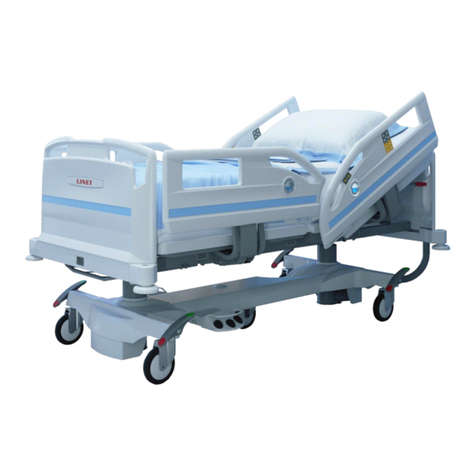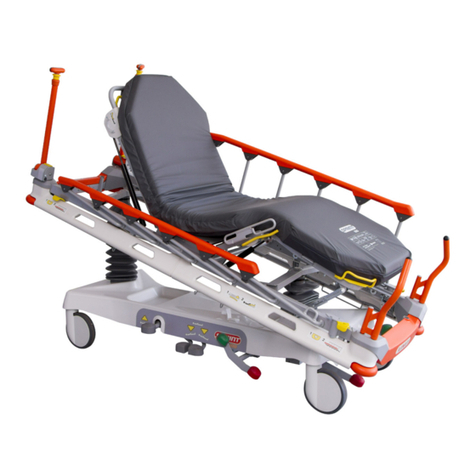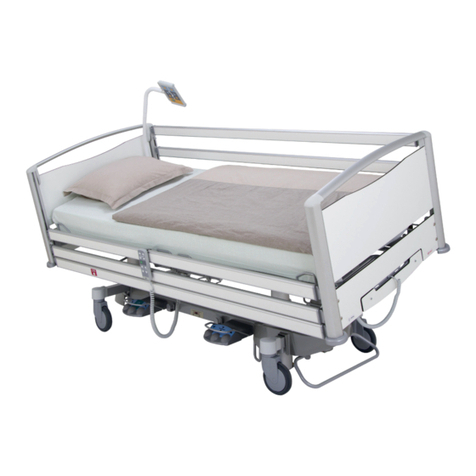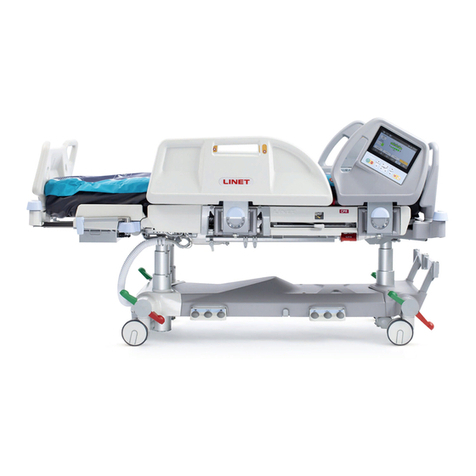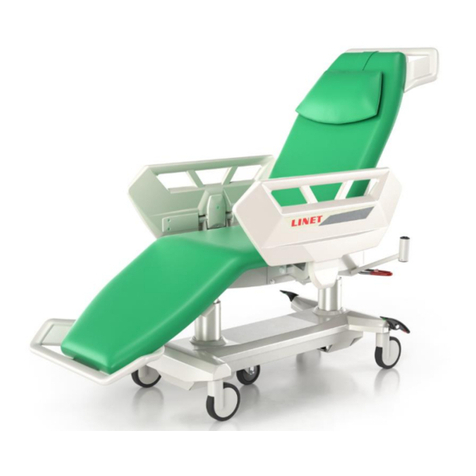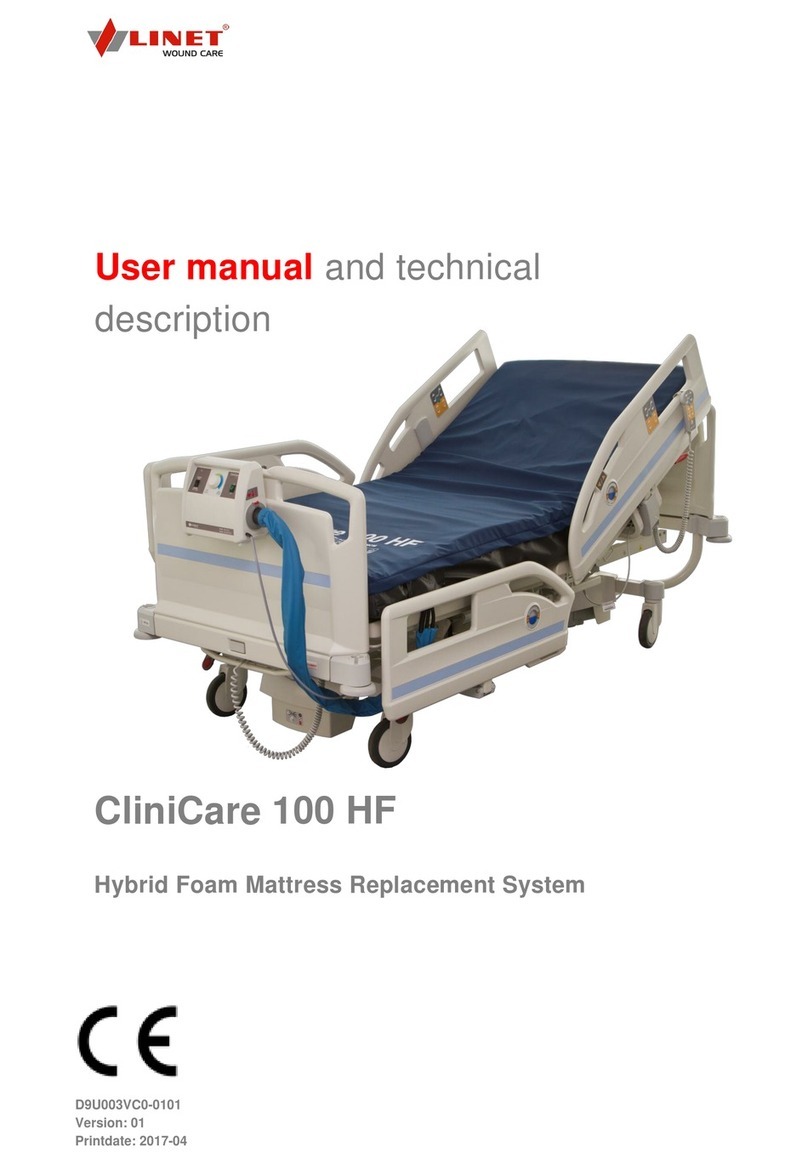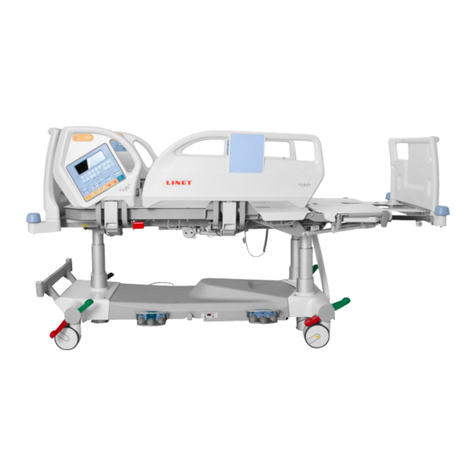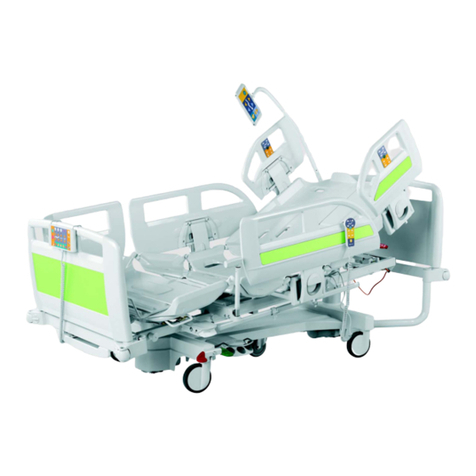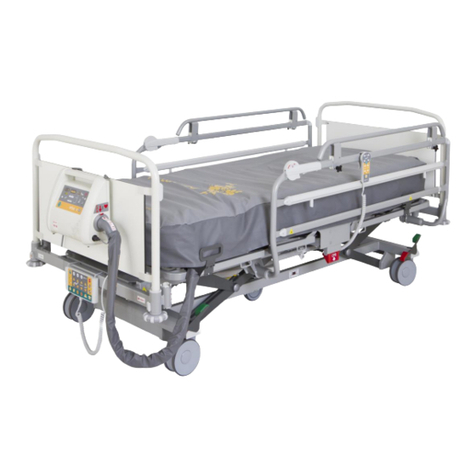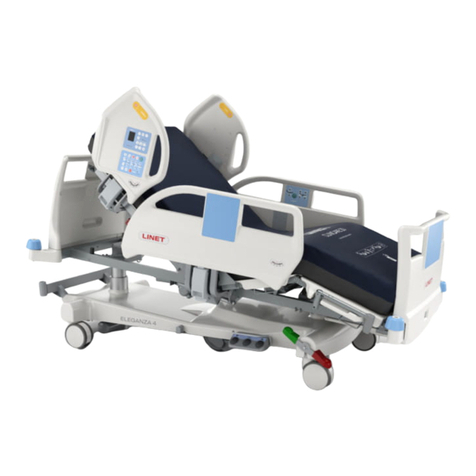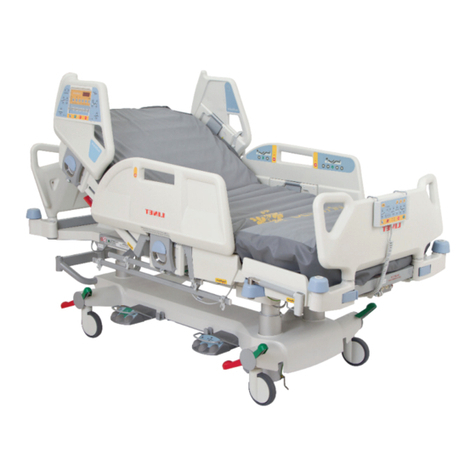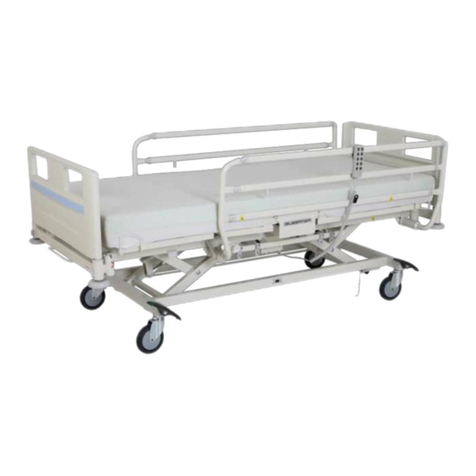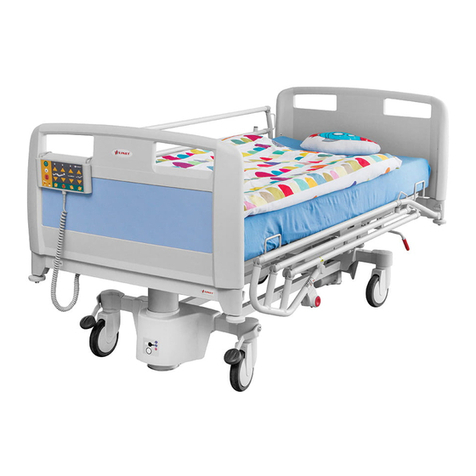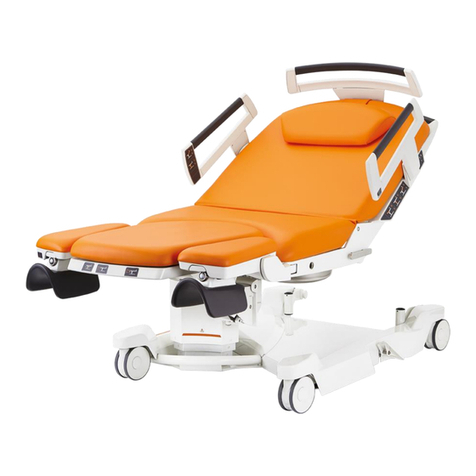
12
- Possible use deviating from this intended purpose represents a non-intended use and is ex-
cluded from all claims of liability.
Basic functions and uses of nursing home beds
Modern nursing home beds have numerous bedding functions, which are described in detail
in the instructions for use for the respective product. The full benets of a nursing home bed
can only be achieved through careful training of the users and inhabitants of a nursing home.
Please repeat these training sessions as regularly as possible and pay particular Warning to the
necessary safety regulations that must be observed.
- In general, there is always a risk of unintended or wrong adjustment of the bed. For example,
pressing switches accidentally or unintended release of functions can be a hazard to certain
patients/residents! To ensure a high degree of protection, it is absolutely essential to use lock-
ing functions and/or the release keys selectively. Under no circumstances may release keys
remain on the handset or on the bed! Release keys are intended exclusively for use by nursing
sta.
- The use of the locking functions and if required, the intentional separation of the bed from
the power supply – as an absolute locking measure for the maximum protection of a possibly
jeopardised patient / resident– lies exclusively at the discretion of and in the responsibility
of the medical supervision and nursing sta in charge. Corresponding measures should be
noted in the shift report to guarantee a correct shift handover.
- The use of special positions, such as Trendelenburg, Anti-Trendelenburg, layered bedding or
relative lowered head position as a shock position is explicitly allowed only by medical su-
pervision sta. These functions must be locked for patients and residents, since this could
otherwise result in hazards.
The safety notes in the specic product instructions for use must be observed, since hazards
could otherwise occur.
When using the side guards, particular care and caution should be taken:
- side guards are used rst and foremost to protect the patient from rolling out. On no account
may the side guards be used as a means to hold the patient rm.
- As soon as the mobility of the patient/resident is restricted, a court order is required to use the
side guards. Only divided side guards or side guards that can be individually lowered, in which
only the head and section is assembled, and which can be used as a help in getting in and out,
are just one permissible exception for mobile residents/patients here.
- Overloading caused by sitting, leaning or pulling on the side guards can result in serious
damage to this and cause hazards. It is essential that such overloading is avoided.
- When using side guards, their suitability should be checked, taking into account
the peculiarities of the respective patient/resident. In particular the clearances
between the panels and supports in relation to the body shape of the patient/resident must
be taken into account, so that entrapment or slipping through is ruled out. If necessary, ad-
ditional side guard cushioning must be used which reduces the size of the gap or closes it.
This decision is exclusively the responsibility of the medical supervision in charge. The details
on the restriction of the intended use in these instructions for use are referred to as an orien-





















